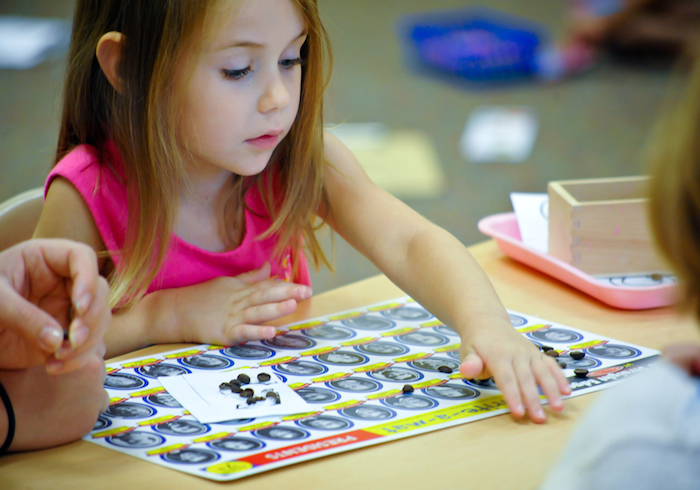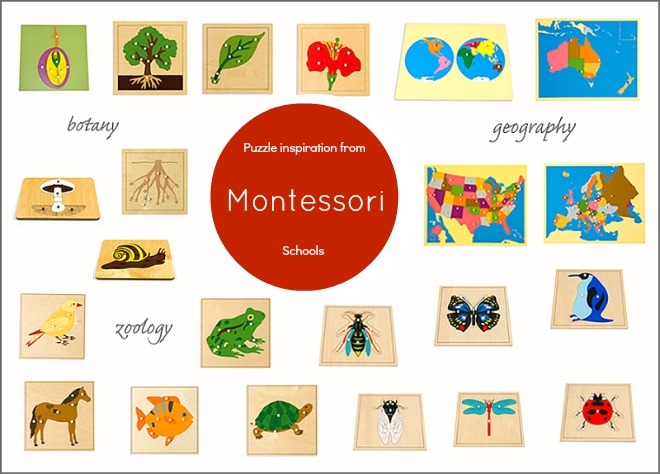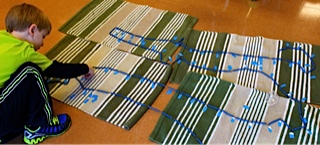Beyond the Pink Tower:
What Parents Need to Know about the Primary Montessori Prepared Environment
By Mary Da Prato
A Montessori Casa, or classroom for three to six year old students, consists of three core elements: developmentally appropriate mixed-age groups, the trained Montessori guide, and a complete set of the official scientifically designed Montessori manipulatives.
[1] The combination of these three essential elements becomes the Prepared Environment, a learning environment that best suits the physical, intellectual, and emotional development of each individual child. For optimal results, Montessori students are organized into three year mixed-age groups instead of single-age groups. The appropriate three year age groupings are determined by stages of cognitive development known in Montessori as the “Four Planes of Development.” Children from birth through six years of age comprise the First Plane. The First Plane can be divided into two age groups: birth through three years of age and three through six years of age. A Montessori Casa dei Bambini, or Children’s House, is designed to best meet the needs and desires of children ages three through six, although many students are ready to begin their life in the Casa at two years and ten months of age depending on readiness. In a mixed-age environment, younger students have older children, not just adults, as friends, mentors, and advocates. Older children in turn have the opportunity to assist their younger peers which reinforces self-esteem, patience, and compassion. Additionally, older children gain confidence in their own skills by helping their younger classmates. An older child who helps a younger child tie a bow, for example, refines his own bow tying skills.
To further support social skills among mixed-age groups of children, and to ensure the correct proportion of three, four, five, and six year olds in a given Casa, twenty-five to forty students should be in a single classroom with only one teacher and as many aides as are required for supervision purposes. Contrary to popular belief, small class sizes make students too dependent upon adult assistance, which eliminates the opportunity to develop individual problem solving skills. Classes with too few students also limit social interactions among different ages of children within the Casa. A small class of ten students, for instance, may only have one or two five year olds whereas a class of forty students would likely have ten five year olds to interact with and assist younger students.



